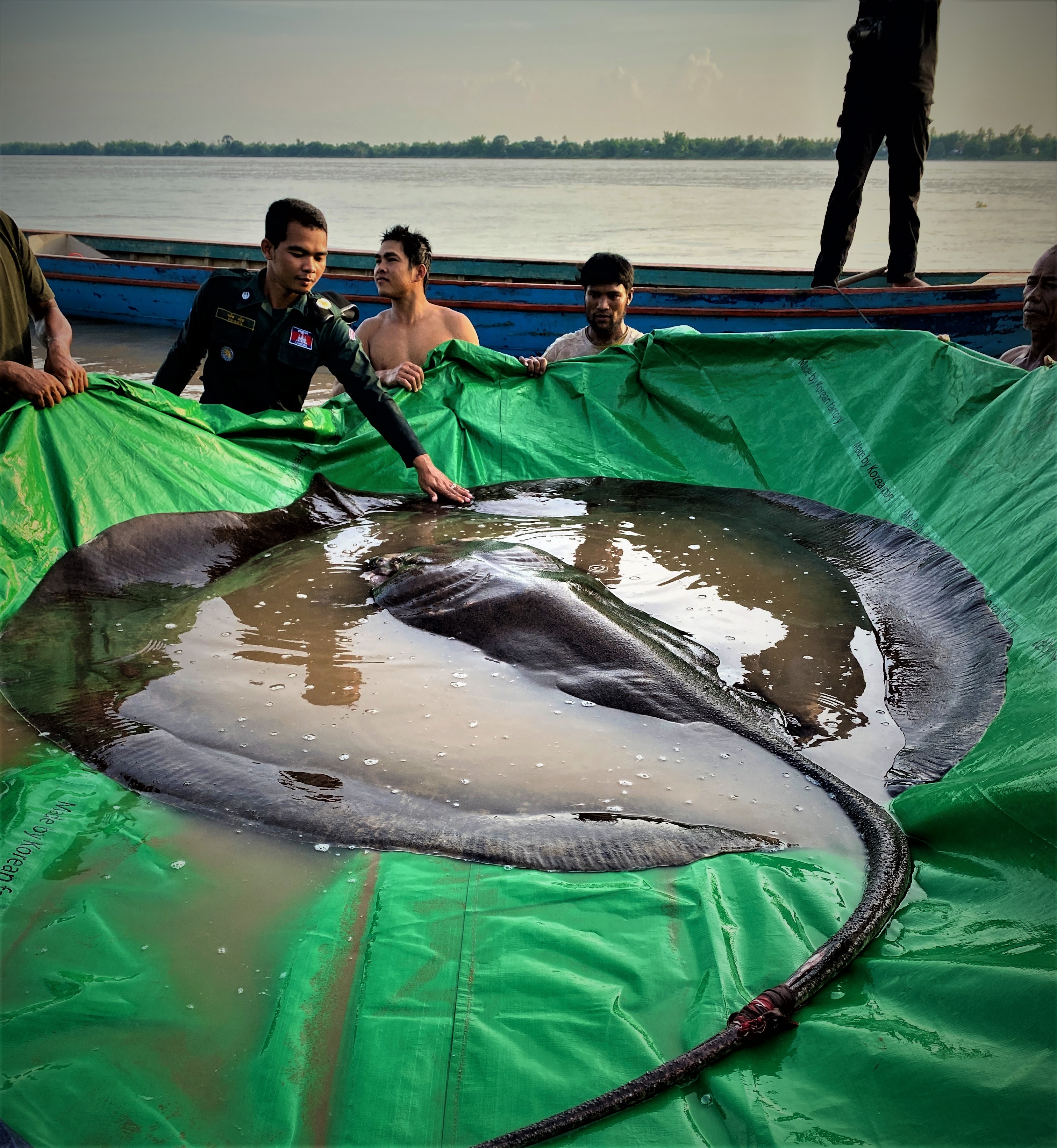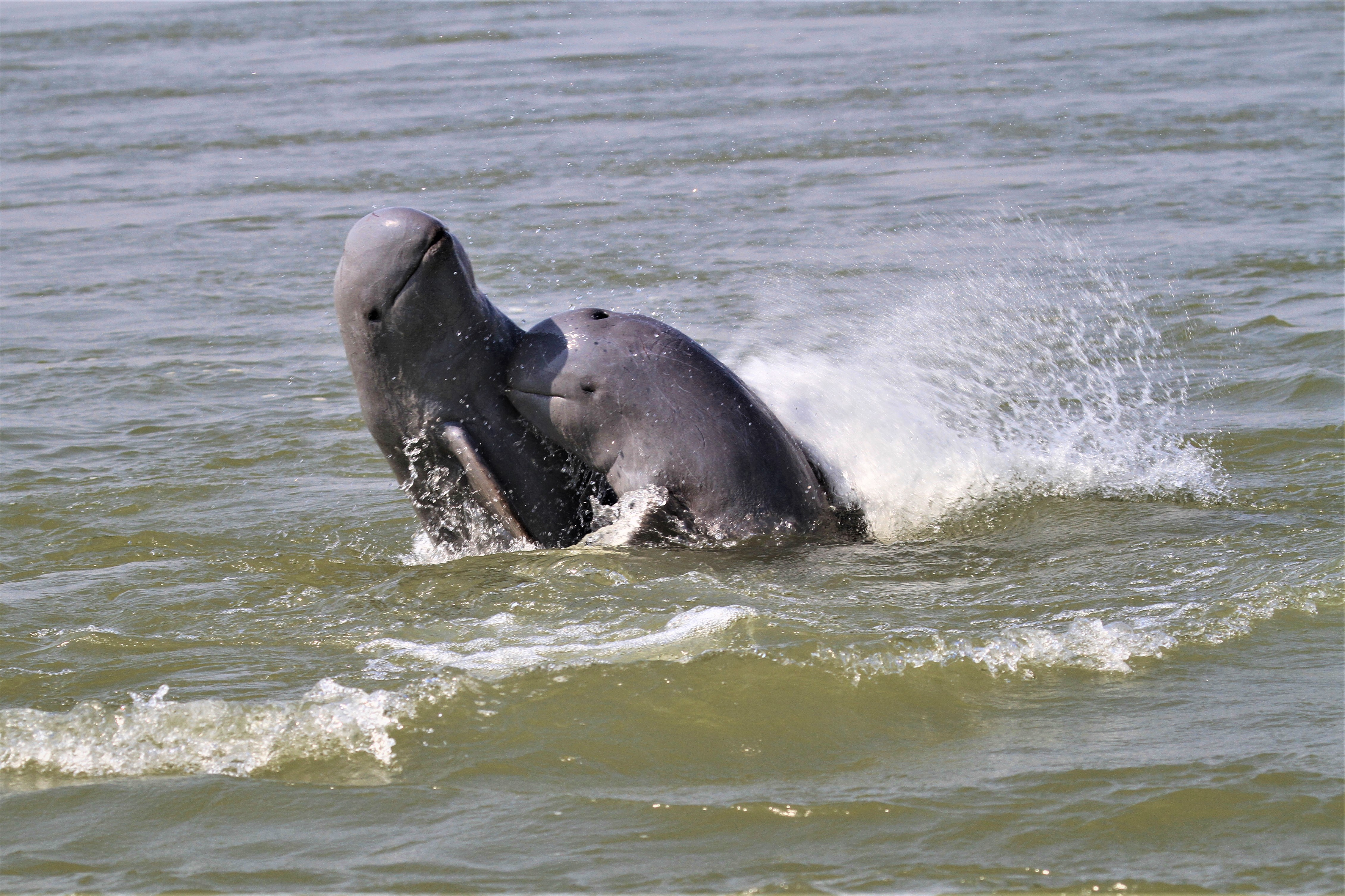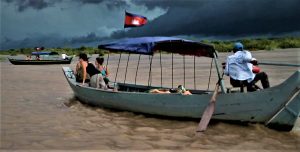A bold Cambodian plan to secure World Heritage status along their stretch of the Mekong, where the free-flowing river has sustained some of the world’s greatest biodiversity, could provide much-needed respite to a river in danger of dying from dams and over-exploitation, experts say.
In Phnom Penh, the Environment Ministry’s Under-Secretary of State Neth Pheaktra shared their plan to secure UNESCO world heritage recognition for all the rich biodiversity to be found along the long stretch of the Mekong from the Lao border to the province of Kratie over 200 km downstream.
Marc Goichot, a freshwater resources and Mekong specialist for the World Wide Fund for Nature (WWF), welcomed the selection of this site. “The wide variety of habitats along this part of the Mekong in Cambodia creates perfect conditions for wildlife to thrive, making this area a miraculous area for freshwater biodiversity,” he said. WWF is assisting in the preparation of the government’s application to UNESCO.
Goichot sees the UNESCO proposal as an exciting step forward for the conservation of the planet’s rivers. “The planned Mekong World Heritage site would play a key role in protecting the planet’s biodiversity” because the selected site includes “95 deep pools that provide refuge for migrating fish and a spawning habitat for globally important critically endangered species including, Irrawaddy dolphins, giant stingrays and giant catfish.”
“Securing UNESCO recognition will also help protect 40 endangered species on IUCN’s red-list, in one of world’s best areas of biodiversity opening a new chapter in wild-life conservation in Cambodia,” Neth Pheaktra enthused.
Cambodia is already home to three heritage sites, including the legendary Angkor Wat and one natural heritage site, the successful U.N.-backed biosphere reserve and the bird sanctuary site on Tonle Sap, the biggest inland lake in the region.
UNESCO experts in Phnom Penh expect that an application to add a biodiversity conservation zone along the Mekong as a natural heritage site would be fast-tracked, given that it could bring about an immense contribution to implementing agreements reached at COP15 of the United Nations Biodiversity Conference.
Kampi village, just outside the town of Kratie, lies along a stretch of the Mekong best-known for its dolphin-watching and ecotourism activity. The area also ranks as one of the world’s richest biodiversity spots and is a sanctuary for many endangered species. WWF has listed over 411 fish species resident here (out of 11,00 for the whole Mekong River), along with 281 bird species and 46 reptile species.
Apart from the 92 surviving Irrawaddy dolphins, wildlife experts were excited by the rarely-seen giant stingray landed by fishermen in 2022, a giant that mostly hangs out in the deepest pools of the river.

Zeb Hogan, head of the Wonders of the Mekong project, said the stingray captured in 2022 was a reminder of the ecological importance of the stretch of the Mekong around Stung Treng, which is “emerging as the last refuge of many species of iconic aquatic megafauna,” including the Irrawaddy dolphin, softshell turtle, and giant barb. Photo Credit: Wonders of the Mekong team, Cambodia
Good News and Bad News
The good news – that so many endangered species may finally get the protection they deserve – has unfortunately been marred by some bad news. This potentially spectacular success story for global conservation could be derailed if a huge dam project lurking on the horizon, and being promoted by Cambodian tycoon Okna Kith Meng, ever gets the green light to go ahead.
While the Ministry of Environment had been mapping out its plans to better protect one of the few undammed areas left on the Mekong, Okna Kith Meng – the chairman of the Royal Group, which built its fortunes from real estate, telecommunications, and partnering with international investors – has quietly secured permission from the Ministry of Mines and Energy, to carry out a feasibility study to revive the controversial Stung Treng dam.
A plethora of scientific studies, dating back to the first attempt to build the Stung Treng dam in 2007, have so far dissuaded the government from going ahead with the project. The losses to fisheries, wildlife, and the rural livelihoods of hundreds of thousands would far outweigh any benefits in electricity, according to the most recent WWF report, published in 2018.
Another Cambodian project, the Sambor dam lying downstream from Stung Treng, was condemned as a recipe for “killing the Mekong” by the U.S.-based Natural Heritage Institute consultant report, which was leaked to the Guardian.
Many Cambodians struggle to understand why any company would want to resurrect a dam that has already been twice rejected, and which most Mekong watchers had assumed was dead and buried, after the announcement of the 2020 moratorium on dams.
Two Conflicting Narratives: Where Does the Government Stand?
Just over a year ago, 10 Cambodian NGOs congratulated the government on its pledge at COP26, the U.N. Climate Change conference held in Scotland. “We greatly appreciate the Royal Government of Cambodia’s efforts to find alternative energy sources coupled with their commitment to ban hydropower, and not construct any new coal-fired power plants,” they said.
Say Samal, the environment minister, delivered Cambodia’s progressive energy commitments to the COP26 summit in November 2021. Yet only six weeks later, this policy had been called into question when the Ministry of Mines and Energy quietly approved the Cambodian tycoon’s request to proceed with a feasibility study on resurrecting the Stung Treng dam. The study, approved in December 2021, was completed in June 2022 without any consultation with Stung Treng communities.
Working out where the Energy Ministry and other ministries really stand on this threat to the Environment Ministry’s conservation dream for world recognition is no easy task.
In my interview with Neth Pheaktra, he vehemently insisted, “We will not build any new dams. It is also in our COP27 [the 2022 U.N. Climate Change conference] presentation, and forms the basis of our UNESCO application.”
Heng Leang, the director-general at the Ministry of Mines and Energy, also responded, “No dams can be allowed on the Mekong.” And his senior colleague Tun Lean, an under-secretary, likewise confirmed “Cambodian government policy does not permit dams on the mainstream.”
The director of the U.S.-based Stimson Foundation’s Mekong program, Brian Eyler, who was recently in Phnom Penh, had received similar answers. “Cambodian ministers from multiple agencies continue to provide assurances that they are standing firm on commitments on (no dams) on Stung Treng,” he said. Eyler recommended, “We should hold these statements at face value.”
It seems rather strange, however, that no one in government has yet dared to communicate the official “no dams” policy to Okna Kith Meng, chairman of the Royal Group, who is also the current president of the Cambodian Chamber of Commerce.
In spite of his ownership of CNC, a leading Cambodia TV station, and his extensive telecommunications assets, Okna Kith Meng invariably refuses to be interviewed by the media. Emails to his Royal Group went unanswered.
Okna Kith Meng had previously promoted the construction of the Lower Sesan 2, funded and built by Chinese partner state-owned Huaneng Corporation and their subsidiaries. Civil society argues that the dam turned out to be a disaster for fisheries and for the Mekong, while also uprooting local communities.
The specter of a revived Stung Treng dam by the same company that built the much-reviled Lower Sesan 2 dam on one of the Mekong’s most important tributaries, is a scary prospect. It is spreading fear and alarm among fishing communities according to Mongabay, an environmental journal.
If the Royal Group gets its way with the 1,400 MW Stung Treng dam, backed by the same Chinese investors and with construction coming from the state-owned Huaneng Corporation, it would further consolidate China’s grip over the Mekong. It would also effectively humiliate the Cambodian government by shredding its credibility over its failure to enforce the moratorium on Mekong hydropower.

It is reported that only 90 dolphins are left along the Mekong. They are now only to be found between Stung Treng and Kratie along the river. Photo credit: Credit WWF/Creative Commons.
Stung Treng Provincial Administration deputy director Men Kung provided some clarification to the Phnom Penh Post: “Only a study on feasibility has gone ahead, but this was not a study for [dam] construction, which could only go ahead, if the government explicitly gives the green light for it.”
That has definitely not happened. Veteran Prime Minister Hun Sen, who has recently been making overtures to the United States and the European Union, and striving for less dependence on Beijing, has not made any public statement as to which of these two narratives about the Mekong he favors, and which option would best bolster his long-term legacy.
UNESCO’s stamp of approval has brought enormous benefits worldwide, but especially to poorly-resourced developing countries. It has enhanced the protection, funding, and restoration of many sites, leading to to greater public awareness, and increased tourist arrivals. Governments also see World Heritage Sites as boosting national prestige and enhancing their status as a must-see country to visit.
If Hun Sen can be persuaded that this pioneering U.N. World Heritage Site would enhance his government’s international standing, increase its prestige as a world tourism destination, and garner Western aid all at the same time, then it could be a win-win situation for an authoritarian leader, as he contemplates his legacy and retirement in 2023.
Eyler also sees many benefits from UNESCO approval. “It will help Cambodia to maintain its commitment not to build dams on or around this stretch of the river.”
But as a veteran analyst of the region, and knowing the twists and turns of Cambodian politics, he wisely cautions, “Advocating for conservation is a constant unending struggle in Cambodia and more resources are needed so that activists can keep up their efforts.”

































